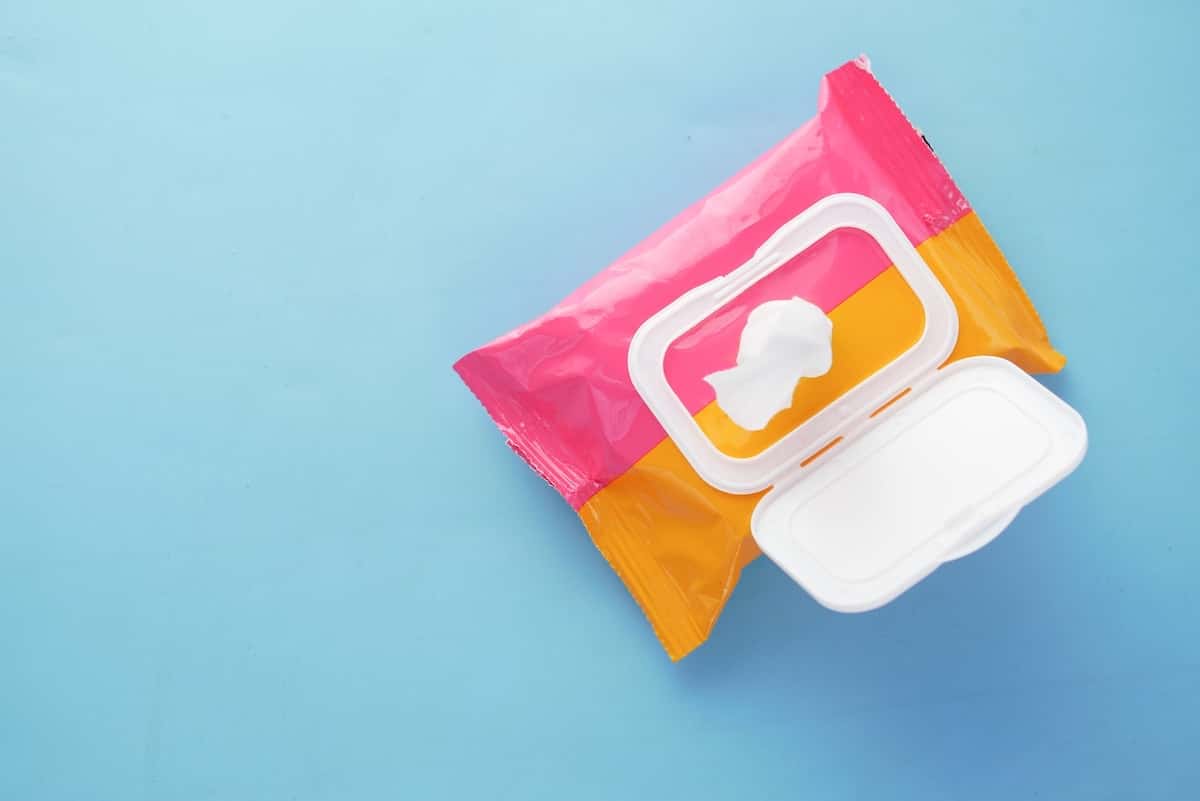What exactly are the steps involved in wet wipes manufacturing, and what are the materials? DHTI’s comprehensive wet wipe production guide details the baby wipes’ manufacturing process. This article will give you everything you need to know about how wet wipes are made!
Learn more: Private label wipes manufacturer – “Make your own wet wipes” solution
- Manufacturing Baby Wipes from Start to Finish
Wet wipes, also known as baby wipes, are disposable cloths designed to clean the most sensitive areas of an infant’s body. Made from a fabric similar to dryer sheets, these wipes are saturated in a cleansing solution to give them their cleaning power.
Step 1 – Design
The first step in the wet wipes manufacturing project is design. Wet wipes need to contain specific characteristics to satisfy consumer expectations. As such, the fabric selected should be durable enough to withstand heavy-duty cleaning tasks yet disposable. Since the wipes are saturated in cleansing solution, the fabric must be absorbent.
Manufacturers must consider the design of their packaging in addition to the design of the wipes themselves. Baby wipe packages should be able to quickly dispense single sheets while preserving the moisture of the towelettes that have not yet been used. Thermo-formed plastic tubes are often the go-to solution for packaging wet wipes.
The first step in the wet wipes manufacturing project is design
Step 2 – Materials
Once a design has been finalized, the next step is selecting the materials used. Wet wipes are usually created from non-woven fabric. Interlocking loops of fibers weave traditional fabrics together to form a matrix; however, non-woven fabrics are created through a pressing process that compresses separate fibers into a single sheet of material. Cotton, rayon, polyester, polyethylene, and polypropylene are standard fibers used in this process.
Fabric selection is a crucial part of the wet wipes manufacturing process
Step 3 – Manufacturing
In the wet wipes manufacturing wet-laid process is typically applied. During this process, non-woven fibers are made into liquid slurries with water and other chemicals, resulting in a paste which is then pressed into flat sheets by rollers and dried to form long master rolls of material. The master rolls are further processed using a slitter rewinder, cutting the sheets into smaller sizes for additional processing. After cutting, an automated pneumatic cross cutter traverses to cut the material into smaller rolls before they are discharged onto a platform preparing them for the next phase of manufacturing: consumer roll slitting and perforating.
Wet-laid process is typically applied in the wet wipes manufacturing
The next step involves cutting the master rolls into various widths used for canister and bucket wipes. Some roll slitting and perforating machines can increase roll production capacity by unwinding, perforating, slitting, and rewinding wipes rolls at a rate of up to 60 per minute.
At DHTI, we offer industry professionals the end-to-end wet wipes manufacturing services and equipment they need to handle any stage in their manufacturing process. From our master roll-slitting capabilities to our canister loading and fluid-filling equipment, our team is prepared to guide you through every step of the wet wipe production process from start to finish.
DHTI offers industry professionals the end-to-end wet wipes manufacturing
DHTI, with its years of experience in wet wipes manufacturing, has developed a modern production process that delivers exceptionally high-quality products. If you need wet wipes, please contact us!
Dong Hiep Trading and Investment Joint Stock Company:
- Representative office: 69B Thuy Khue, Thuy Khue Ward, Tay Ho District, Ha Noi City.
- Manufacturing site: Lot CN7, Tu Liem Industrial Cluster, Minh Khai Ward, Bac Tu Liem District, Ha Noi City.
- Hotline: (84-24) 3716 0270.
- Website: https://dhti.vn


